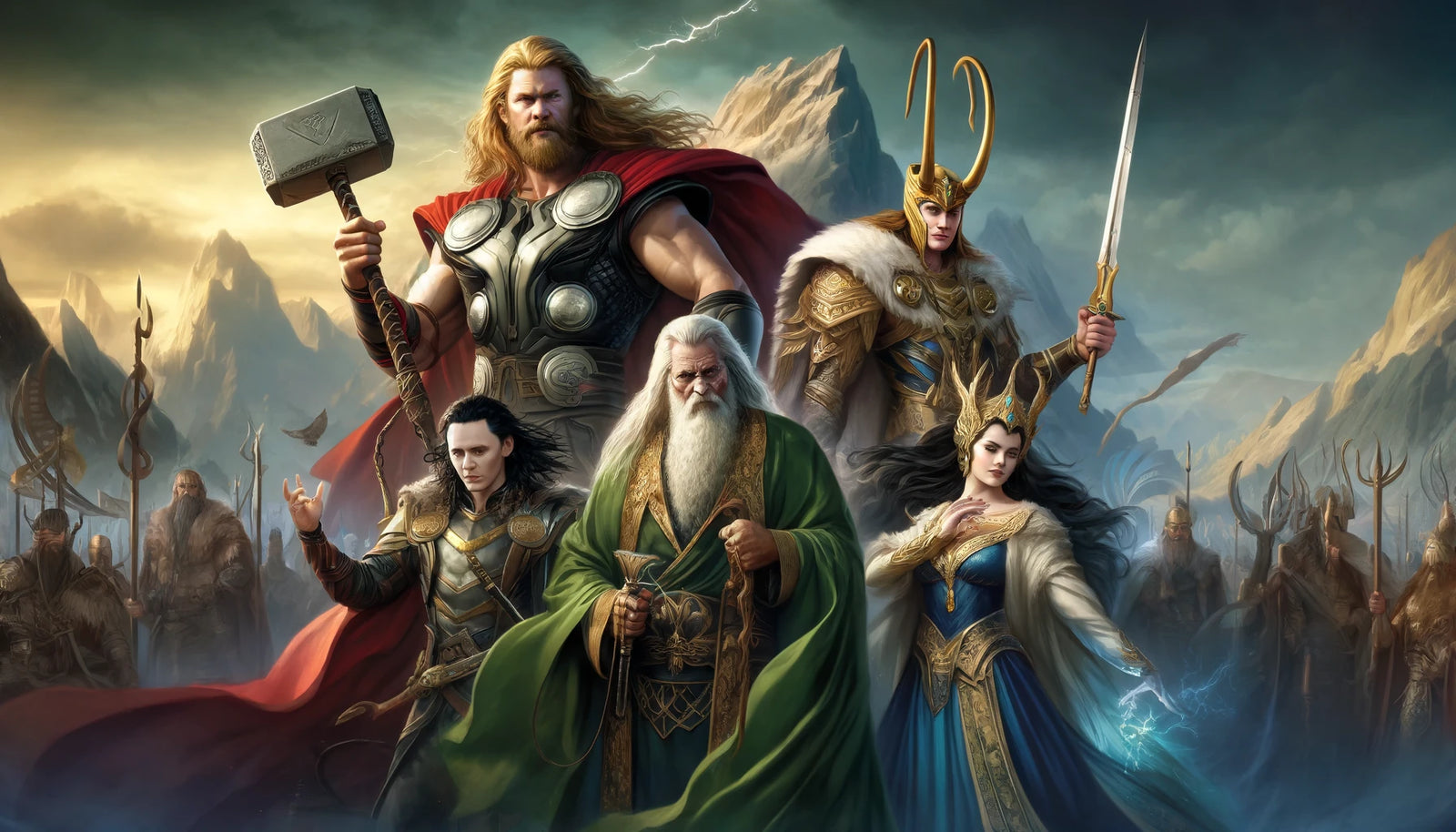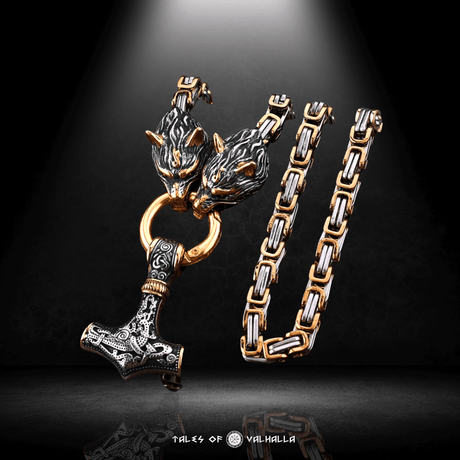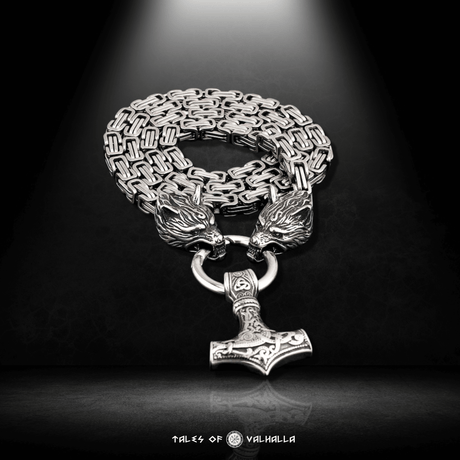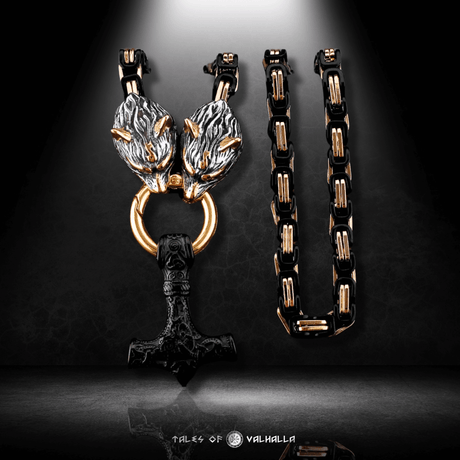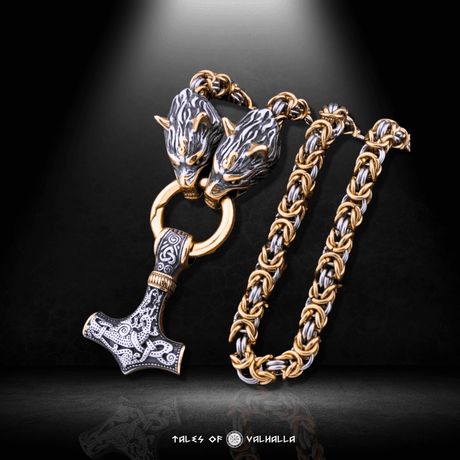Immerse yourself in the rich narratives of powerful deities such as Odin, Thor, Loki, and Freya, uncovering their extraordinary abilities, complex relationships, and heroic adventures. From the creation of the cosmos to Ragnarok, the cataclysmic battle that heralds the end of the world, their stories are an intricate tapestry of suspense, drama, and timeless wisdom.
Through expertly crafted storytelling and epic sagas, this article unveils the mythical landscapes and captivating tales that have captivated audiences for centuries. Unearth the origins of the nine realms, encounter mythical creatures like giants and dwarves, and delve into the symbolism that underpins Norse cosmology.
Overview of the Norse pantheon
The Norse pantheon is a complex and intricate system of gods and goddesses, each with their own unique powers and responsibilities. At the center of this pantheon is Asgard, the realm of the gods, a majestic city that towers above the rest of the nine realms. Surrounding Asgard are the realms of Midgard, home to humans, and the realms of the giants, dwarves, elves, and other mythical creatures.
The gods of the Norse pantheon are divided into two main groups, the Aesir and the Vanir. The Aesir are the more warlike gods, while the Vanir are associated with fertility and prosperity. Together, they form a dynamic and complex pantheon that reflects the values and beliefs of the ancient Norse people.
Within this pantheon, there are several key gods and goddesses who play crucial roles in the Norse cosmology. These deities are revered for their power, wisdom, and, at times, their flawed humanity. Let's explore some of the main gods and goddesses of Norse mythology.
Odin, the Allfather and ruler of the gods

Odin, the Allfather and ruler of the gods
Odin, often referred to as the Allfather, is the chief god of the Norse pantheon. He is the ruler of Asgard and the father of many of the other gods. Odin is associated with war, wisdom, and magic, and is known for his insatiable thirst for knowledge. He sacrificed one of his eyes in exchange for a sip from the Well of Wisdom, gaining immense knowledge and understanding of the world.
Odin is often depicted as a wise old man, with a long white beard and a wide-brimmed hat. He is frequently accompanied by his two ravens, Huginn and Muninn, who travel the world and bring him back news and information. Odin's most famous weapon is his spear, Gungnir, which never misses its mark.
The Allfather is also the god of poetry and inspiration. He is credited with discovering the runes, a system of writing and divination that was of great importance to the Norse people. Odin's complex character and his willingness to make great sacrifices for knowledge and power make him one of the most intriguing figures in Norse mythology.
Thor, the god of thunder and protector of mankind

Thor, the god of thunder and protector of mankind
Thor, the son of Odin, is the mighty god of thunder and the defender of Asgard and Midgard. He is often depicted as a powerful warrior, wielding his hammer, Mjolnir, with great strength and precision. Thor's hammer is said to be one of the most powerful weapons in the entire cosmos, capable of leveling mountains and creating thunderstorms.
As the god of thunder, Thor is associated with storms, lightning, and fertility. He is often called upon to protect the Norse people from the forces of evil, particularly the giants who pose a constant threat to Asgard and Midgard. Thor's adventures and battles are the stuff of legend, and his strength and bravery are admired by both gods and humans alike.
Despite his fierce and formidable reputation, Thor is also known for his good nature and his sense of humor. He enjoys eating and drinking with his fellow gods, and he is often depicted as a jovial and boisterous figure. Thor's popularity among the Norse people is a testament to his role as their protector and his ability to bring both strength and joy into their lives.
Loki, the trickster god and agent of chaos

Loki, the trickster god and agent of chaos
Loki, the god of mischief, is perhaps one of the most complex and controversial figures in Norse mythology. He is a shape-shifter, capable of transforming himself into various animals and objects. Loki is known for his cunning and his ability to deceive both gods and humans, often causing chaos and mayhem in the process.
Despite his mischievous nature, Loki is also a valuable ally to the gods. He assists them in their adventures and frequently saves them from difficult situations. However, his actions are often motivated by self-interest, and he is known to switch sides when it suits him.
Loki's most infamous act is the killing of Baldr, the beloved son of Odin and Frigg. This act sets in motion a chain of events that will ultimately lead to Ragnarok, the final battle between the gods and the giants. Loki's role in the events leading up to Ragnarok is a reflection of his complex character, as both a trickster and a catalyst for change.
Freyja, the goddess of love, beauty, and fertility

Freyja, the goddess of love, beauty, and fertility
Freya, the goddess of love, beauty, and fertility, is one of the most revered and beloved goddesses in Norse mythology. She is associated with desire, passion, and the pursuit of pleasure. Freya is often depicted as a stunningly beautiful woman, with flowing golden hair and a radiant smile.
As the goddess of love, Freya is sought after by gods and humans alike. She has the power to influence the hearts and minds of others, and her presence is said to bring joy and harmony to any gathering. Freya is also associated with fertility and abundance, and she is often called upon to bless marriages and ensure the prosperity of crops and livestock.
Despite her association with love and beauty, Freya is also a fierce warrior. She rides into battle in a chariot pulled by two large cats, and she is known for her bravery and skill with a sword. Freya's multifaceted nature and her ability to embody both love and strength make her a truly powerful and captivating goddess.
Freyr, the god of prosperity and abundance

Freyr, the god of prosperity and abundance
Freyr, the brother of Freya, is the god of prosperity, abundance, and fertility. He is associated with the bountiful harvest and the well-being of the Norse people. Freyr is often depicted as a handsome and gentle figure, with a crown of antlers adorning his head.
As the god of prosperity, Freyr is particularly revered by farmers and those who depend on the land for their livelihood. He is believed to bless the fields and ensure a plentiful harvest, providing food and sustenance for the Norse people. Freyr is also associated with peace and diplomacy, and he is often called upon to settle disputes and maintain harmony.
Freyr's most famous possession is his ship, Skidbladnir, which has the ability to fold up like a cloth and fit into his pocket. This ship is said to be able to sail on both land and sea, making it a truly magical and extraordinary vessel. Freyr's association with abundance and his ability to provide for his people make him a beloved and vital figure in Norse mythology.
The epic tales and adventures of the Norse gods
The tales of the Norse gods are filled with epic battles, heroic quests, and tragic destinies. These stories have been passed down through generations, weaving a rich tapestry of mythology and folklore. From the creation of the world to the final battle of Ragnarok, the Norse gods face numerous challenges and trials that test their strength, courage, and loyalty.
One of the most famous tales in Norse mythology is the story of Ragnarok, the cataclysmic battle that marks the end of the world. According to the prophecy, the gods will be pitted against the giants in a battle that will bring about the destruction of Asgard and the death of many of the gods. The story of Ragnarok symbolizes the cyclical nature of life and the inevitability of change and renewal.
Another famous tale is the story of the theft of Thor's hammer, Mjolnir, by the trickster god Loki. This tale showcases Loki's cunning and his ability to outwit even the mighty Thor. It also highlights the importance of Thor's hammer as a symbol of his power and the protection it provides to Asgard and Midgard.
The adventures of Odin are also a prominent feature of Norse mythology. Odin seeks knowledge and wisdom through various means, including sacrificing his eye and hanging himself from the World Tree, Yggdrasil, for nine days and nights. These sacrifices demonstrate Odin's commitment to gaining knowledge and understanding, even at great personal cost.
Conclusion: The enduring legacy of Norse mythology
The Norse gods and their epic tales continue to captivate audiences to this day. Their stories have inspired countless works of art, literature, and film, and their influence can be seen in popular culture around the world. The enduring legacy of Norse mythology lies in its ability to tap into universal themes of heroism, sacrifice, and the eternal struggle between good and evil.
The gods and goddesses of the Norse pantheon are not perfect beings, but rather flawed and multidimensional characters. They embody both the light and dark aspects of human nature, making them relatable and compelling figures. Through their stories, we learn about the complexities of the human experience and the importance of courage, wisdom, and compassion.
Whether you are drawn to the enchanting tales of Odin's quest for knowledge, Thor's battles against the giants, Loki's tricks and mischief, or Freya's beauty and strength, the Norse gods offer a rich and diverse pantheon that continues to inspire and captivate us. Step into the world of Norse mythology and discover the timeless wisdom and epic tales of the mighty pantheon.

